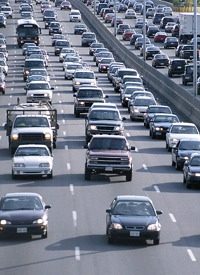
California, in keeping with its activist tradition, has maintained stricter environmental standards than those of the federal government since before 1970. The Clean Air Act, originally passed in the late 1960s, contained a provision allowing California to seek permission to set its own tougher standards. With mounting talk about global warming, California passed a state law in 2002 setting new carbon dioxide-emissions standards. The Bush administration, however, argued that there was no compelling reason for California to set its own standards independently of federal ones. The state sought a waiver from the EPA to enforce the new law in 2005, but the waiver was turned down in favor of a national standard. EPA administrator Lisa Jackson finally granted California the waiver it has sought to carry out the new state rules.
The Obama administration is thus moving in California’s direction. In May, Obama announced national emissions standards more in keeping with those of California than previous federal standards. The upshot is that California can begin imposing its emissions standards on 2009 cars. These call for a 30-percent reduction in carbon dioxide emissions by 2016, compared with 2002 levels.
The policy applies to all passenger cars, other passenger vehicles (e.g., buses), and light-duty trucks. According to environmental groups, these emit 60 percent of all greenhouse gases. The new national standards, still undergoing development, are to take effect in 2012. They would require a fuel economy of 35.5 miles per gallon in 2016. Current federal law has standards set at 27.5 miles per gallon for passenger cars and 22.3 miles per gallon for SUVs and light-duty trucks. California, however, can adopt the new standards immediately.
Standards similar to California’s will soon be adopted by Arizona, Connecticut, Maine, Maryland, Massachusetts, New Jersey, New Mexico, New York, Oregon, Pennsylvania, Rhode Island, Vermont, and Washington. It will also be adopted in the District of Columbia. This will amount to roughly 40 percent of all vehicles on U.S. roads and highways.
The change to higher emissions standards has its critics. Legal representatives of utilities and refiners argue that California has long had different regulations on gasoline and electricity. The result has been higher production costs that have been passed on to consumers in the form of higher prices. California’s state economy, hard hit by the worst economic downturn since the Great Depression, remains in extremely precarious condition. The state has reached the point of having to issue IOUs to pay its bills because of a worsening budget deficit. Then the question comes up: "Should California experiment with tough environmental regulations likely to hamper economic activity over the short as well as the long term?"



